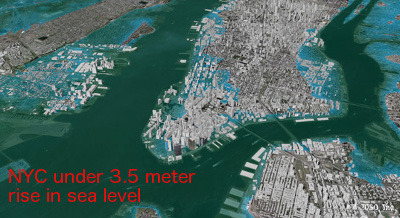SCIENCE FICTION FOR FUN OR ENLIGHTENMENT?
/
Childhood's End coming to the SyFy channel in December 2015.
What do you look for in science fiction? Pure fun? Escape? New knowledge?
My impression these days is that a lot of the SF being published is pure space opera, or quasi-paranormal scifi-fantasy, alternate history just for the steampunk gadgetry, or TV and movie series spinoffs. There’s nothing wrong with reading that’s just for fun—I choose it sometimes too, although I don’t feel inclined to write it.
Ideally, though, the escape SF provides is fun even when it’s dealing with something serious. It should be entertaining even as it compels us to learn something about ourselves. The SF novels with staying power do this well—they raise the genre to the level of provocative literature while still giving the inner child in us a big kick.
Classic SF from the likes of Arthur C. Clarke and Larry Niven often explored the “big crazy artefact”: Clarke’s mega-spaceship Rama or Niven’s Ringworld, Greg Bear’s Eonseries asteroid and, more recently, the Bowl Of Heaven from Niven and Benford. They set up a mind-boggling concept and then explored all of its dramatic possibilities while finding ways to reflect our human foibles and challenges. As if Newtonian and Einsteinian physics were a muse.
Then there were the sociological treatises of Isaac Asimov (the Foundation series) and Ursula K. Le Guin (The Dispossessed). Thought provoking, but still absorbing stories. And, of course, the outright cautionary novels like 1984, Brave New World, and Fahrenheit 451 which forced us to examine the implications of political and technological developments. These days, a good number of post-apocalyptic stories, like Margaret Atwood’s MaddAddam trilogy follow the same path (as did Atwood’s The Handmaid’s Tale). I could add Hugh Howey’s Wool series to the list.
Since the earliest days of the computer revolution, and especially the coming of the internet, there’s been a big trend from William Gibson, Charles Stross and others to examine technological saturation in society to extreme degrees, as well as the politics of surveillance and the death of privacy. In these books we face quandaries that we’ll have to face in real life very soon.
It’s interesting that Philip K. Dick’s stories, most featuring some form of altered reality, have inspired more movie treatments than any other SF author I can think of. Movies like Blade Runner, Total Recall, Johnny Mnemonic, and The Adjustment Bureau haven’t always been that faithful to Dick’s original material, but they’ve provided food for thought along with the special effects and other movie magic.
Military SF from Robert Heinlein and others reflected and commented on military conflicts of their day. Modern examples include the Forever War series from Joe Haldeman and Old Man’s War by John Scalzi. Even stories about aliens like Stranger In A Strange Land and Clarke’s Childhood’s End ( now becoming a TV event) are mostly about humans. Educational, you could say, but math class never held my attention so well.
Then there are the “what if” novels that writers like Robert J. Sawyer do so well, tackling issues that are just on the horizon: what if rejuvenation treatments worked for one person but not their spouse? What if everyone in the world could get a glimpse of their future? What if the World Wide Web became self-aware? We can learn something about ourselves, our society, our priorities and morals from all of these, but they are so much more than intellectual exercises.
By all means enjoy a good romp in space, a clever time travel tale, or a Nazis-won-the-war alternate history. But don’t be afraid to order a richer fictional meal that’s brain food as well as comfort food. You might find it even more satisfying.



